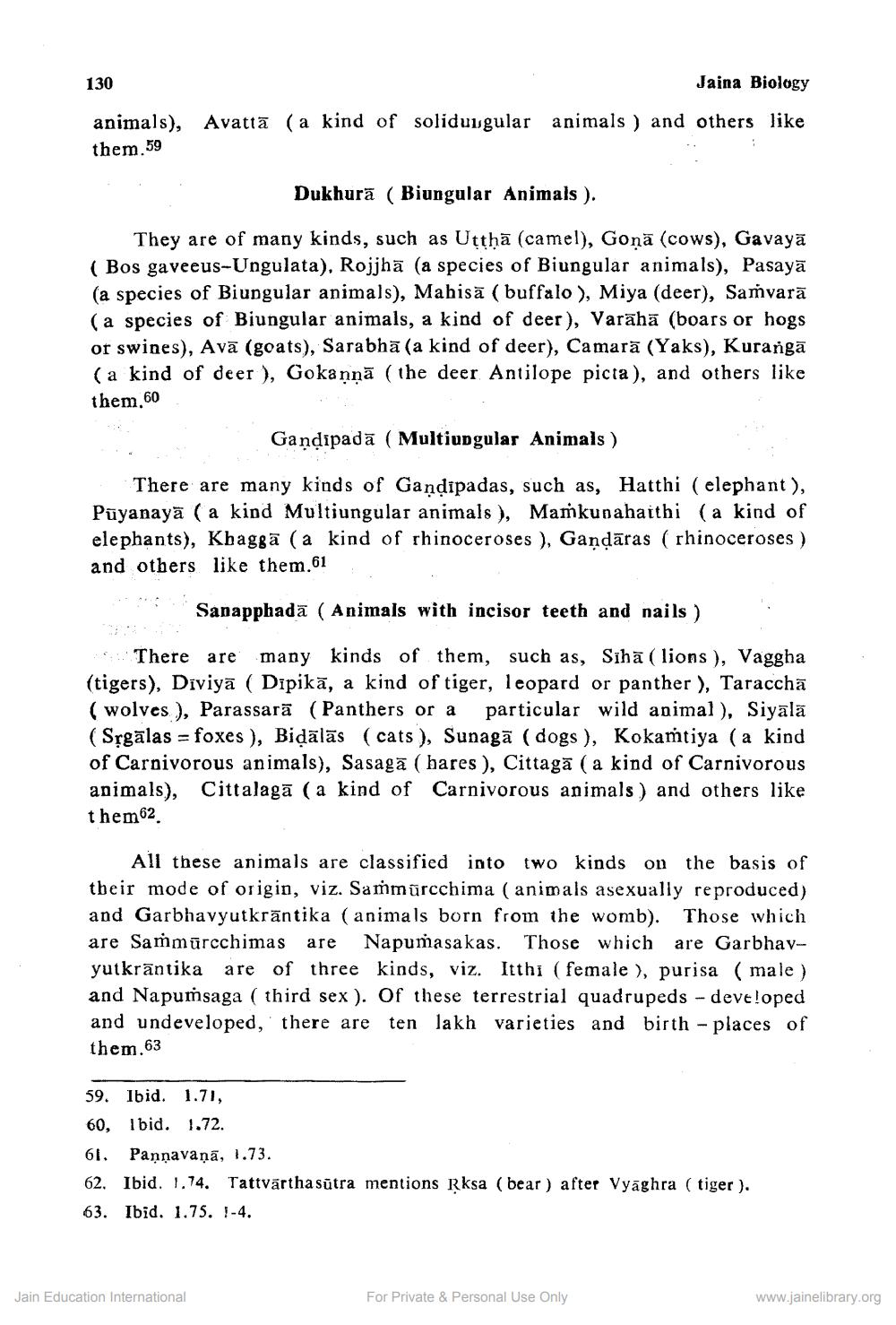________________
130
Jaina Biology animals), Avatta (a kind of soliduygular animals ) and others like them.59
Dukhurā (Biungular Animals ).
They are of many kinds, such as Utthā (camel), Gonā (cows), Gavayā ( Bos gaveeus-Ungulata), Rojjhā (a species of Biungular animals), Pasayā (a species of Biungular animals), Mahisā (buffalo), Miya (deer), Samvarā (a species of Biungular animals, a kind of deer), Varāhā (boars or hogs or swines), Avā (goats), Sarabhā (a kind of deer), Camarā (Yaks), Kurangā (a kind of deer ), Gokannā (the deer Antilope picta), and others like
them. 60
Gandipadā (Multiupgular Animals )
There are many kinds of Gandipadas, such as, Hatthi ( elephant ), Püyanayā (a kind Multiungular animals ), Maṁkunahaithi (a kind of elephants), Khaggā (a kind of rhinoceroses ), Gandāras (rhinoceroses ) and others like them.61
Sanapphadā (Animals with incisor teeth and nails )
There are many kinds of them, such as, Sīhā (lions ), Vaggha (tigers), Diviyā (Dipikā, a kind of tiger, leopard or panther ), Taracchā (wolves), Parassarā (Panthers or a particular wild animal ), Siyala (Srgālas = foxes ), Bidālās (cats ), Sunagā (dogs ), Kokamtiya (a kind of Carnivorous animals), Sasagā (hares ), Cittagā (a kind of Carnivorous animals), Cittalagā (a kind of Carnivorous animals ) and others like them 62
All these animals are classified into two kinds on the basis of their mode of origin, viz. Sammürcchima (animals asexually reproduced) and Garbha vyutkrāntika (animals born from the womb). Those which are Sammūrcchimas are Napumasakas. Those which are Garbhavyutkrāntika are of three kinds, viz. Itthi (female), purisa (male) and Napumsaga ( third sex ). Of these terrestrial quadrupeds -deve!oped and undeveloped, there are ten lakh varieties and birth - places of them.63
59. Ibid. 1.71, 60, Ibid. 1.72. 61. Pannavaņā, 1.73. 62. Ibid. 1.74. Tattvārtha sūtra mentions Rksa (bear) after Vyāghra (tiger). 63. Ibid. 1.75. 1-4.
Jain Education International
For Private & Personal Use Only
www.jainelibrary.org




